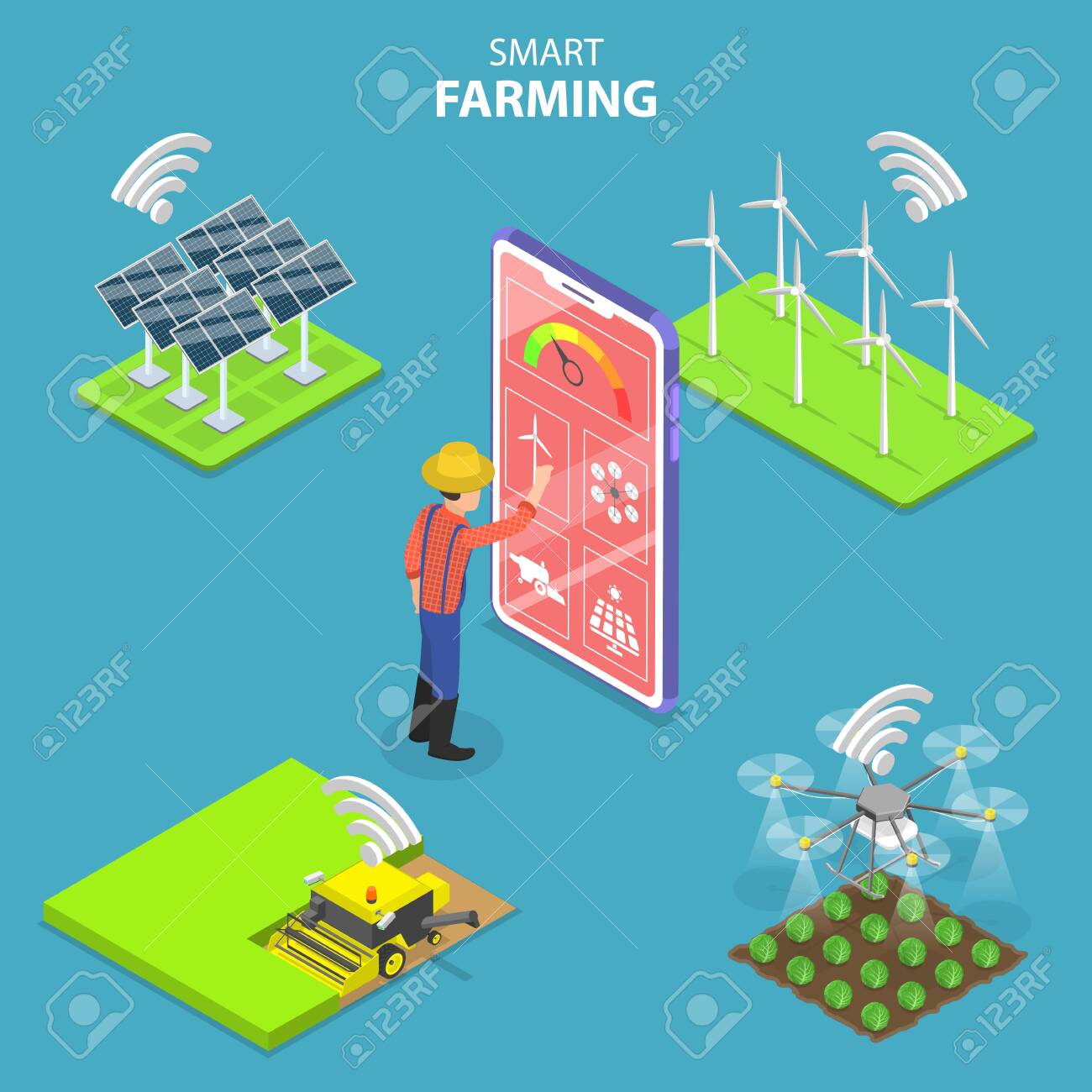Article by: Asst. Prof. Suwan Juntiwasarakij, Ph.D., MEGA Tech Senior Editor
The rise of smart, digital agriculture could be the most transformative and disruptive of all industries, because smart agriculture not only will change how farmers farm their farms, but also will transform fundamentally every part of the agrifood value chain. Digital agriculture will affect the behavior of farmers, and also affect the way that input providers, processing and retail companies market, price and sell their products. It can be applied to all aspects of agrifood systems and reflects a change in generalized management of resources towards highly optimized, individualized, intelligent and anticipatory management, in real time, hyperconnected and driven by data.
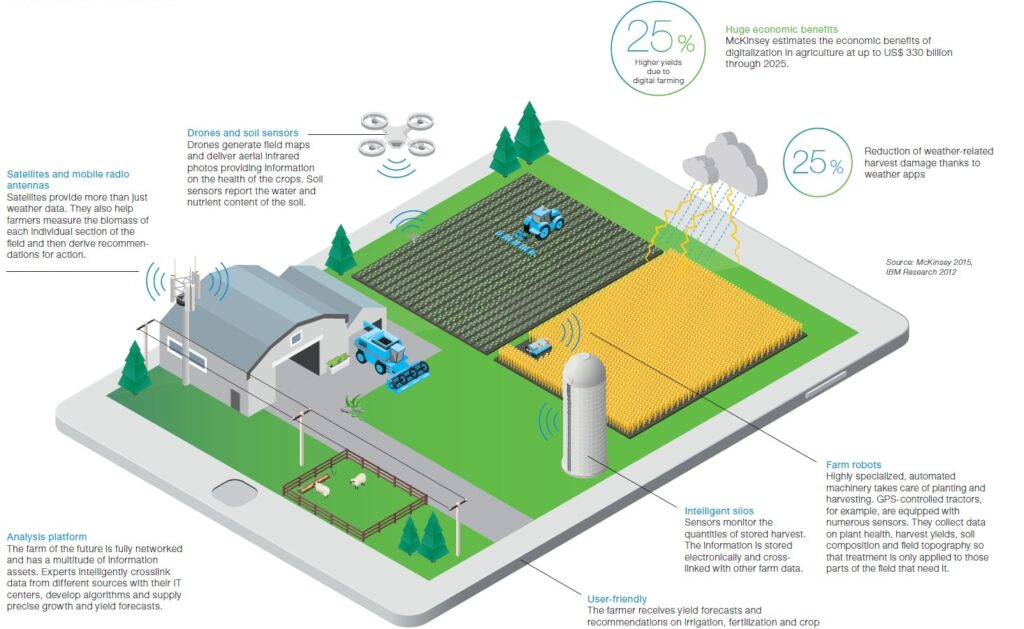
Source: The Future of Agriculture and Food, Handelsblatt Research Institute, Bayer
The digital revolution is changing agriculture. State-of-the-art tractor drive almost autonomously across the field. Drones and soil sensors can detect diseases in the fields at an early state, and robots are enabling precision agriculture. Big data and algorithms in agriculture will enable insights and optimization in the field. This enables farmers to apply fertilizer and crop protection agents more precisely. For instance, rather than treating all fields, crops and value chains uniformly, each could receive their own highly optimized management prescriptions and animals could be monitored and managed individually. Value chains could have traceability and coordination at the lowest level of granularity. The desired results of digital agriculture are systems of higher productivity, which are safe, anticipatory and adapted to the consequences of climate change, to offer greater food security, profitability and sustainability.
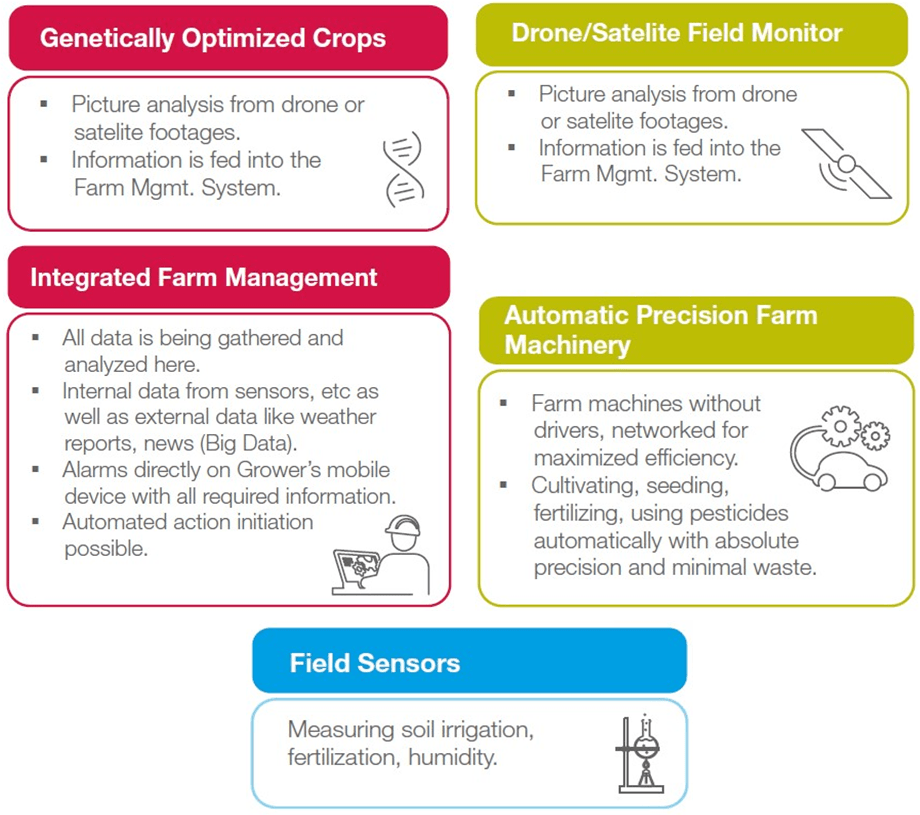
Source: Feeding 10 billion people in 2050, Capgemini
AGRITECH INVESTMENT SURGES
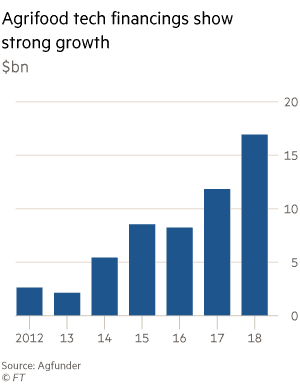
According to Financial Times, the amount of money invested worldwide in agricultural and food technology jumped by more than 40 per cent in 2018, to $17 billion. According to AgFunder, an online venture capital platform, the number of deals also rose 11 per cent year-on-year, to 1,442. Nearly half of the fundraising took place in the US while China was the second-biggest market, followed by India. Investments in biotechnology increased more than 50 per cent, to $1.5 billion in 2018. For example, Indigo Ag, the Boston-based start-up that connects sellers and buyers of crops through a mobile app, raised $250 million. Pivot Bio gained backing for its nitrogen-fixing microbes from Breakthrough Ventures, a billionaire investor syndicate fund with investors such as Jeff Bezos and Michael Bloomberg. Although the technology advances, agriculture sector quite lag behind sectors such as oil and gas, and even government, with respect to the productivity gains associated with digitization. In agriculture, the long cycles for experimentation, connectivity issues in rural areas, and complex systems affected by weather-genetics, nutrition, water availability, soil composition, and the like-have made digitizing more difficult.
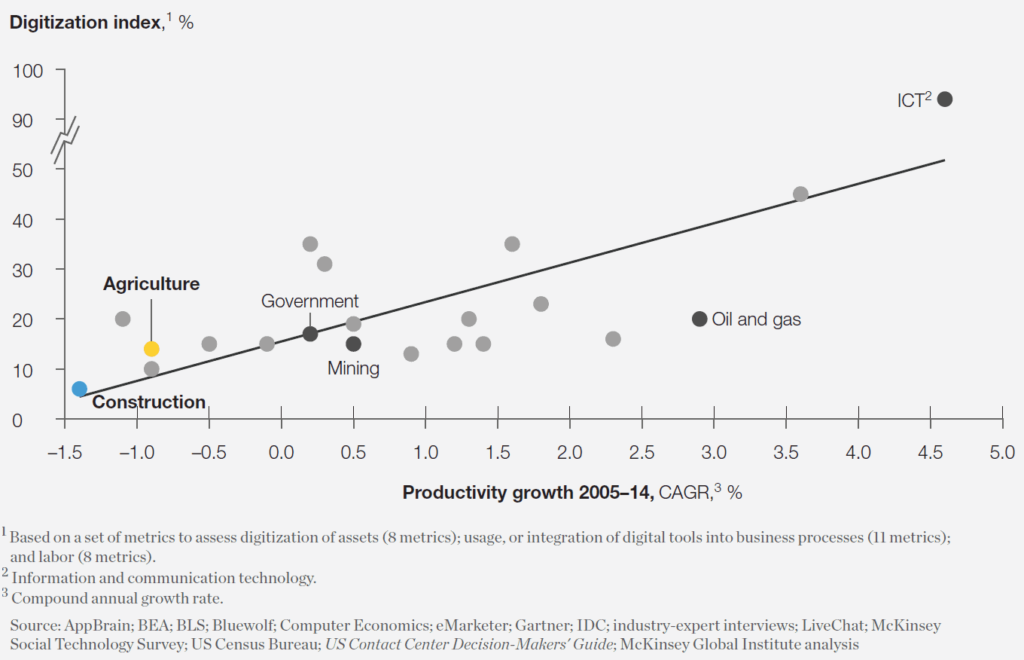
Source: How OEMs can seize the high-tech future in agriculture and construction, McKinsey & Company
FRICTION TO DIGITIZATION
According to McKinsey’s survey, for farmers, GPS auto steering topped the list of compelling uses for new technologies, with 88 per cent finding it attractive. They also liked variable application of inputs, such as determining the right mix of seeds, water, fertilizer, and other soil enhancements, and predictive maintenance. These tools and technologies that could be integrated into existing operations with relatively minor modifications were perceived by end customers as more attractive than those would require an entire redesign, such as a move to fully electric or fully automated equipment.
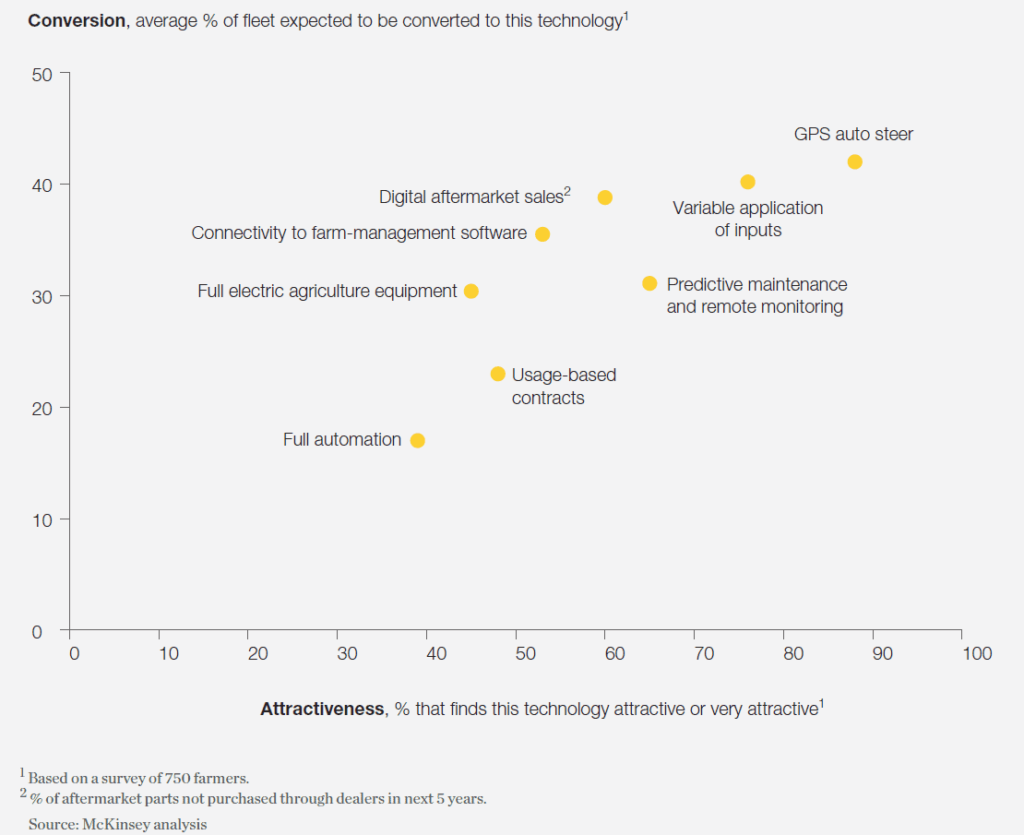
Source: How OEMs can seize the high-tech future in agriculture and construction, McKinsey & Company
Farmers primarily care about heightened job effectiveness, their financial incentive is to have higher yield. The survey showed the extra cost of over usage is a main worry, and they were primarily worried about the availability of the equipment when it is needed. Moreover, interest in peer-to-peer rental is also low. They tended to already have higher brand concentration, fewer brands in ownership, and they also wanted to have control over their data generating from using their equipment.
TAKE-HOME MESSAGE
However, more framers ranked high-tech companies above OEMs as trusted providers when it came to use cases such as GPS auto steering, variable application of inputs, and connectivity to farm-management software. OEMs have traditionally been at the forefront of hardware production development. However, with value shifting from hardware to software, OEMs need to expand their digital capabilities and provide ecosystems to customers, a solution which is a collection of entities that can partner to serve customers better. Most importantly, OEMs will have to develop a deep understanding of customer decision journeys to empathize and improve their concerns.

